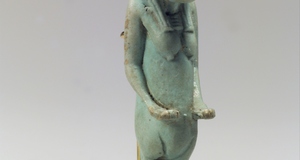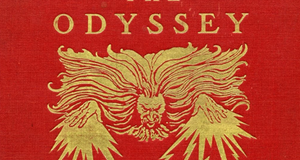Much Ado About Nothing: Examining the Curse of Tutankhamun
By
2012, Vol. 4 No. 06 | pg. 2/2 | « While Lord Carnarvon’s death serves as the most high profile death that curse enthusiasts proclaim as directly related, there are two logical routes that a curse may take for the rest of the individuals that worked or were otherwise present at the tomb. Supporters of the curse tend to fall into one of these two camps, making vast generalizations that either support the fact that the curse acted indiscriminately on all of the people involved with the tomb’s discovery and excavation or that the curse acted solely upon those who were most prominent in disturbing the tomb. Although the reasoning behind these two possibilities makes sense, analysis of the lives of the individuals related to the tomb easily disproves both theories and, by extension, the overall notion of the curse. Disproving the notion that the curse acted indiscriminately requires research into the lives of individuals related to the site. While contemporary studies can take advantage of death records and biographies on the more prominent individuals involved in the tomb’s excavations to determine a cause of death, such analysis is much harder to accomplish for the workers on the ground, the Egyptian peasants that served as hard labor for the site. Few records exist on who was employed, their activity after working at Tutankhamun’s tomb, and their deaths making it much harder for one to research the outcomes of their lives. Fortunately, skeptics existed at the time and kept track of this information, preserving it for future analysis. The most prominent skeptic regarding the Pharaoh’s curse at the time was Herbert Winlock. Winlock, a distinguished Egyptologist in his own right, served as a director of the Metropolitan Museum of Art, establishing and fostering the improvement of their department on Egyptian Archaeology.23 In addition to these achievements, Winlock remained a noted skeptic who despised the notions of the Pharaoh’s curse and worked to counter it in popular media. One of Winlock’s successors, Thomas Hoving, noted that Winlock kept a record of “anyone who had been to any of the official openings” and, upon finding erroneous reports in the newspapers, “would send [the newspaper] a correction.”24 Winlock’s tally of individuals related to Tutankhamun’s tomb serves as a contemporary resource in order to ascertain the nature of the curse. In an article published in The New York Times in January 1934, Winlock reveals his tally and his reasoning for why the curse is invalid. Winlock states that in the ten years since the tomb’s opening, all those present, including 30-40 Egyptian workers, were alive and “in good health.”25 Furthermore, the newspaper published the names of the individuals who Winlock had tracked and determined that only six individuals had died in the ten years since the tomb’s opening, and all of these deaths have explanations relating to the poor health of the individuals involved. Winlock’s “death roll” remains invaluable as a timely source of information on those associated with the tomb and his skeptical analysis definitively disprove the curse as having affected these individuals indiscriminately. 26If the curse did not act indiscriminately, as Herbert Winlock has aptly proven, then it should be selective−choosing individuals to punish for disturbing the tomb of Tutankhamun. It then logically follows, if some supernatural entity intends to discipline individuals responsible for entering the tomb, that the individuals that the curse affects would be individuals of prominence−of central importance to the disturbing of the tomb. At this point, curse supporters would cite Lord Carnarvon as the prime example of a prominent individual upon who the curse struck, but this claim has already been disproven by an examination of the background on Lord Carnarvon’s life. Perhaps, then, the succession in prominence leads to Howard Carter, whom little has been addressed up to this point. Howard Carter, the archaeologist responsible for the discovery of Tutankhamun’s tomb and its subsequent excavation, logically seems to be the next important individual that the curse might punish−the one caveat, of course, being that the curse did not punish Carter. Carter’s importance to the discovery is indisputable. As principal investigator, he would be the likeliest target for a curse to act upon; however, his death occurred in 1939−almost 17 years after the opening of the tomb.27 This long period of time one of the key tenets of evidence for skeptics of the curse, since one would expect that Carter would be its main target. Furthermore, Carter was not only present at the tomb’s opening but at almost every other related event; as the chief archaeologist on the project he attended the opening of the sarcophagus, the unwrapping of the mummy, and conducted excavations at the site for roughly 10 years. If anyone were likely to be in proximity with some sort of supernatural force effecting disastrous events on individuals, it would have to be Howard Carter. In addition, just as information existed on Lord Carnarvon’s background, the same exists for Carter. In The New York Times obituary for Carter, the paper notes that, he remained unhealthy from the days of his youth, as Carnarvon had. The obituary goes on to contend that “Mr. Carter himself...was the best refutation of the curse.”28 Clearly the background on Carter’s health demonstrates the same sort of juncture of a series of events that caused his death; the fact that it occurred almost 17 years after his excavation of the tomb gives evidence to the fact that the curse could not have been the cause of Carter’ s death. Biographer T.G.H. James listed Carter’s death as due to a heart attack secondary to Hodgkin’s Lymphoma,29 a cancer that primarily affects the lymphatic system. Hodgkin’s Lymphoma is characterized by increase risk to an individual that describes Carter almost perfectly: male, over the age of 55, with a history of infection or a weakened immune system.30 It immediately becomes clear that Carter’s poor health from childhood undoubtedly contributed to increasing his risk for Hodgkin’s Lymphoma, not his association with the tomb of Tutankhamun. Given Carter’s survival long after the opening of the tomb and the obvious explanations for his death, skeptics can suitably rule out the curse as an agent of misery in Egypt. With the revelation that the curse does not exist, scientists have tried to determine mechanisms by which a sickness may appear as a curse, affecting the individuals who came in contact with the tomb. It is known that Carter had samples from the site tested for evidence of pathogens to ensure the safety of his colleagues, only to find that the samples contained no evidence of any harmful materials. While the accuracy of this testing remains up for debate,31 scientists currently consider two theories as being possible suspects for the underlying cause behind what appears as the Pharaoh’s curse. A National Geographic News article from 2005, detailed the first of these theories, that the tomb contained some sort of fungus that could cause individuals to become sick with exposure. Tests of samples obtained from mummies in various tombs reveal the existence of species of the fungi genus Aspergillus and “can be particularly harmful for people with weakened immune systems.”32 The idea of mold existing inside the tomb makes complete sense−closing off the tomb seals any microorganisms in a dark and musty environment, more than ideal for common fungus to proliferate. Further, the presence of a fungus that would have a harsher toll on those with weakened immune systems explains the close deaths of individuals whom Herbert Winlock noted might have been unhealthy before ever visiting the tomb.33 In addition to the possibility of fungus, recent research suggests that evolutionary selection may be responsible for creating the Pharaoh’s curse. Research conducted at the Paris VI University has revealed the possibility of propagating viruses that are “highly virulent and very long-lived.”34 Under this theory, because the viruses that were present in the tomb at the time of its sealing had no hosts upon which to feed, they evolved into organisms with longer lifespans outside of a host and that infected a host more easily and more dangerously. Sylvain Gandon, the primary investigator, speculates that this “extreme exploitation” strategy allowed the virus to survive thousands of years in isolation and increased its effect on humans. As a result, upon the opening of the tomb, the virus fed on those who had first entered it.35 The combination of the virus’s high virulence factor and the weakened constitution of the individuals who entered would prove to be lethal, and possibly explains the phenomenon of the curse. Upon a reasonable analysis of the curse of Tutankhamun’s tomb, it becomes evident that logical analysis refutes the evidence cited in support of the curse. The discovery of the tomb presented itself as unique−the tomb lacked the extravagance of the pyramids and remained largely ignored by grave robbers. As one of the foremost archaeological finds of the last century, born into an era of increased global communication, the media played a larger role in the excavation of Tutankhamun’s tomb than any other before it. With this increased media presence, however, also came an increased tendency to spread charlatanism. The threat of the curse became infectious−each adverse effect that remotely be related to the tomb served as fuel for the spread of the curse. Curse enthusiasts typically cited Lord Carnarvon, financial backer for the tomb, as the foremost example of an individual affected by the curse’s powers; a simple examination of Carnarvon’s background finds that he remained in poor health for years leading up to the excavation, and the stress of the excavation led to his eventual death. After disproving this initial claim, application of similar analysis to the rest of the individuals involved with Tutankhamun’s tomb yields a similar conclusion. The evidence for a Pharaoh’s curse becomes weaker when starting from an initial assumption that the curse would either operate indiscriminately against all individuals or operate principally against the most prominent individuals. Herbert Winlock’s tracking of the individuals related the tomb, regardless of prominence, proved invaluable in refuting the indiscriminate notion of the curse; similarly, an investigation into Howard Carter’s background reveals themes comparable to the life of Lord Carnarvon, his benefactor. Disproving the supernatural occurrence of the curse opens up opportunities for speculation on the true nature of the curse, chiefly pathogenic mechanisms that cause widespread illness. Coalescing all of this information leads the skeptic to conclude that the curse is in fact a hoax, as Howard Carter did when questioned about the potential existence of the curse, frequently stating that “the answer is spherical and in the plural…”36 ReferencesBadash, Michelle. “Hodgkin’s Disease−Adult.” The Mount Sinai Hospital. Last reviewed July 2010. http://www.mountsinai.org/patient-care/health-library/diseases-and-conditions/hodgkins-lymphoma-adult Booth, Charlotte. The Curse of the Mummy and Other Mysteries of Ancient Egypt. Oxford: Oneworld, 2009. Carter, Howard. The Tomb of Tutankhamun. New York: Excalibur Books, 1954. Cowie, Susan D.. The Mummy in Fact, Fiction and Film. Jefferson, N.C.: McFarland, 2002. Edwards, I.E.S.. Tutankhamun, His Tomb and its Treasures. New York: Random House, 1976. Gandon, Sylvain. “The Curse of the Pharaoh Hypothesis.” Proceedings: Biological Sciences 265, no. 1405 (August 22, 1998): 1545-1552. Handwerk, Brian. “Egypt’s “King Tut Curse” Caused by Tomb Toxins?” National Geographic News (May 6, 2005). http://news.nationalgeographic.com/news/ 2005/05/0506_050506_mummycurse.html Hoving, Thomas. Tutankhamun: the Untold Story. New York: Simon and Schuster, 1978. James, T.G.H.. Howard Carter: the Path to Tutankhamun. Cairo: American University in Cairo Press, 2001. Lawler, Andrew. “A Mystery Fit for a Pharaoh.” Smithsonian (July 2006). http:// www.smithsonianmag.com/history-archaeology/kv63.html Montserrat, Dominic. Akhenaten: History, Fantasy, and Ancient. New York: Routledge, 2000. Nelson, Mark. “The Mummy’s Curse: Historical Cohort Study.” BMJ: British Medical Journal 325, no. 7378 (December 21-28, 2002): 1482-4. New York Times. “Carnarvon is Dead of an Insect’s Bite at Pharaoh’s Tomb.” April 5, 1923. New York Times. “Curse of Pharaoh Denied by Winlock.” January 26, 1934. New York Times. “Howard Carter, 64, Egyptologist, Dies.” March 3, 1939. Pinch, Geraldine. Magic in Ancient Egypt. London: British Museum Press, 1994. Reeves, C.N.. The Complete Tutankhamun: the King, the Tomb, the Royal Treasure. New York: Thames and Hudson, 1990. Snopes. “Everything But the Egyptian Sinks.” Snopes.com. Last modified January 16, 2007. http://www.snopes.com/horrors/ghosts/mummy.asp 1.) Howard Carter, The Tomb of Tutankhamun (New York: Excalibur Books, 1954), 32. 2.) I.E.S. Edwards, Tutankhamun, His Tomb and its Treasures (New York: Random House, 1976), 2. 3.) Thomas Hoving, Tutankhamun: the Untold Story (New York: Simon and Schuster, 1978), 17. 4.) C.N. Reeves, The Complete Tutankhamun: the King, the Tomb, the Royal Treasure (New York: Thames and Hudson, 1990), 24. 5.) Geraldine Pinch, Magic in Ancient Egypt (London: British Museum Press, 1994), 92. 6.) Dominic Montserrat, Akhenaten: History, Fantasy, and Ancient (New York: Routledge, 2000), 154. 7.) Charlotte Booth, The Curse of the Mummy and Other Mysteries of Ancient Egypt (Oxford: Oneworld, 2009), 197. 8.) “Everything But the Egyptian Sinks,” Snopes, last modified January 16, 2008, http://www.snopes.com/horrors/ghosts/mummy.asp 9.) Reeves, Complete Tutankhamun, 62. 10.) Ibid., 63. 11.) Hoving, Tutankhamun, 228. 12.) Reeves, Complete Tutankhamun, 63. 13.) Hoving, Tutankhamun, 20. 14.) Ibid., 22. 15.) Carter, Tomb of Tutankhamun, 33. 16.) Ibid., 35. 17.) Hoving, Tutankhamun, 221. 18.) “Carnarvon is Dead of an Insect’s Bite at Pharaoh’s Tomb,” New York Times, April 5, 1923. 19.) Reeves, Complete Tutankhamun, 62. 20.) Mark Nelson, “The Mummy’s Curse: Historical Cohort Study,” BMJ: British Medical Journal 325, no.7378 (December 21-28, 2002), 1482. 21.) Reeves, Complete Tutankhamun, 62. 22.) Ibid. 23.) Andrew Lawler, “A Mystery Fit for a Pharaoh,” Smithsonian (July 2006). http://www.smithsonianmag.com/history-archaeology/kv63.html 24.) Hoving, Tutankhamun, 229. 25.) “Curse of Pharaoh Denied by Winlock,” New York Times, January 26, 1934. 26.) Susan D. Cowie, The Mummy in Fact, Fiction and Film (Jefferson, N.C.: McFarland, 2002), 48. 27.) T.G.H. James, Howard Carter: the Path to Tutankhamun (Cairo: American University in Cairo Press, 2001), 468. 28.) “Howard Carter, 64, Egyptologist, Dies,” New York Times, March 3, 1939. 29.) James, Howard Carter, 468. 30.) “Hodgkin’s Disease−Adult,” The Mount Sinai Hospital, last reviewed July 2010, http://www.mountsinai.org/patient-care/health-library/diseases-and-conditions/hodgkins-lymphoma-adult 31.) Nelson, “The Mummy’s Curse,” 1482. 32.) Brian Handwerk, “Egypt’s “King Tut Curse” Caused by Tomb Toxins?” National Geographic News (May 6, 2005). http://news.nationalgeographic.com/news/ 2005/05/0506_050506_mummycurse.html 33.) Cowie, Mummy in Fact, Fiction and Film, 48. 34.) Sylvain Gandon, “The Curse of the Pharaoh Hypothesis,” Proceedings: Biological Sciences 265, no. 1405 (August 22, 1998), 1545. 35.) Ibid. 36.) Cowie, Mummy in Fact, Fiction, and Film, 48. Suggested Reading from Inquiries Journal
Inquiries Journal provides undergraduate and graduate students around the world a platform for the wide dissemination of academic work over a range of core disciplines. Representing the work of students from hundreds of institutions around the globe, Inquiries Journal's large database of academic articles is completely free. Learn more | Blog | Submit Latest in Anthropology |


















